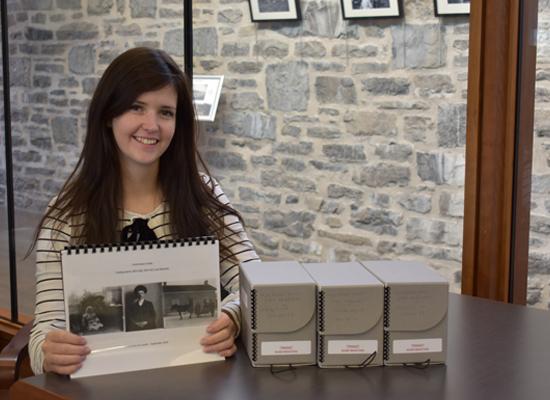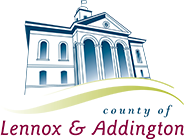
A Peek in the Vault
Glass Plate Negatives from the Fred Brown fonds
Glass plate negatives were first introduced in the 1850’s and were used before photographic film. The most popular type of glass plate negatives were collodion wet plate glass negatives (which were used from 1850 till 1885) and gelatin dry plate glass negatives (which were used from 1880 till 1920).* The different types of glass plate negatives refer to how the chemical emulsion on the glass reacts to light when the photograph is taken.**
Although glass plate negatives require specialized care for long term preservation, they provide remarkably clear images that offer a window into the past. As one can imagine, they are quite delicate which is why when I come across a collection of glass plate negatives I am always excited to work with them and understand the life that the glass plates have had.
The Fred Brown fonds was an exciting project to preserve, describe and digitize glass plate negatives that provided a peek into what life was like in the Wilton area in the early 20th century.

2018.061.5 Harold and Edwin Brown, [190-], 13 x 18cm
The Fred Brown fonds (2018.061) consists of 611 glass plate negatives ranging in size from 6 x 6cm to 13 x 18cm, 70 10 x 15cm photographs and 5cm of textual records that document Fred Brown’s life in the early 20th Century. Fred Brown’s first love was bicycles, not only riding them, but learning the mechanism as well. He had a bicycle shop and fixed bicycles for local customers charging as little as 25 cents and up.
He also had a passion for photography, woodworking, reading and music. He played the organ for Sunday school held at the Lapum School where he met and fell in love with Ida May Bush (born in 1878). He also played the drums in the Yarker Citizen’s Band, as well as with the Wilton Orchestra. At the age of twenty-five he decided to get married, the minister informed Fred that he would have to be baptized and adopt a second name.
He travelled to Picton and changed his name to Fred Erland Brown. From then on, Fred’s photography was dated and stamped as F.E.B. Fred married Ida May Bush on August 31st, 1902.

2018.061.459 Photograph of the Mill in Wilton, [190-], 13 x 18cm
Example of Fred Erland Brown’s signature on one of the glass plate negatives
"Fred Erland Brown (1877-1968) was an amateur photographer who lived on the 7th concession not far from Wilton. Fred owned a bicycle shop and the Yarker Rural Telephone Company. His bicycle and his work took him around the back roads of Ernestown where he became familiar with the landscape and its people. On many of his visits, he carried with him a large, bulky camera where he took images and created glass plate negatives.
While the intent in some of the photography was to create picture postcards, Brown was part of a growing number of photographers trying to capture the essence of his community… Brown's carefully preserved negatives created crystal clear photographs, providing insight into the Edwardian era of rural Ernestown." (Ernestown, Rural Spaces, Urban Places, Larry Turner, 1993, page 169.) ***

Image on the far right is an example of a glass plate negative where you can see where the emulsion meets the glass. If the glass plate negatives become too dry or hot the emulsion will come off of the glass which is why it is important to place them in a climate controlled storage area with the proper conservation techniques.
When I first began the project, the glass plate negatives and textual records were still in their original enclosures (as seen above). After transcribing the metadata from each glass plate negative envelope, piece of paper, ribbon, box or anything else that could provide description about the images I carefully placed the glass plate negatives in acid free negative enclosures and supportive boxes to ensure their long term preservation.

Example of acid free boxes and glass plate negative enclosures which protect the glass plate negatives for long term preservation.
As part of the project I had the opportunity to digitize 611 glass plate negatives from the Fred Brown fonds which allowed te images to come to life. My favourite part of digitizing the glass plates was seeing the markings on the glass plates turn from scribbles into notes written by Fred Brown about the images.
The majority of the glass plates in the fonds were numbered by Fred which correspond to a photograph account book which provided detailed descriptions about the glass plates. In addition to marking the original glass plates, Fred also placed each glass plate negative into a labelled envelope (as seen below) which provided a personal touch to each photograph.

Left – Glass plate negatives envelopes created by Fred Brown
Right – Photograph Account Book by Fred Brown
The item level descriptions for the Fred Brown fonds (2018.061) as well as other records created by Fred Brown (2017.031 and 2015.032) are available on the new Lennox and Addington County Museum and Archives Online Database.

2018.061.85 Le Roy's General Store and Bicknell Brothers General Merchant Store in Camden East, [190-], 10 x 15cm
Please contact the Archivist at 613-354-3027 or by filling out the Contact Us form if you would like to find out more about the Fred Brown fonds!
References
* History of Photography Technology, Library of Congress, 2018.
** The Preservation of Glass Plate Negatives, Greta Bahnemann, 2017.
*** Ernestown, Rural Spaces, Urban Places, Larry Turner, 1993.
